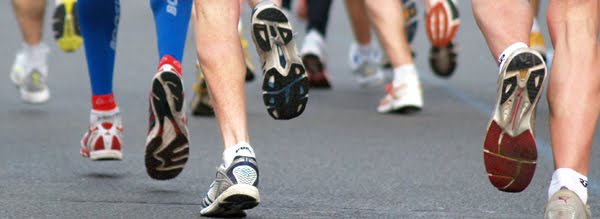How to Create Your Own Interval Workouts
by Jessi Stensland - professional triathlete, movement specialist and
creator of MovementU
Having a specific purpose to each of your workouts is key. Interval training is a great way to help you achieve specific improvements as you work to reach your true potential.
Here is a great example of an interval progression with a basic premise that can be applied to any endurance sports, whether it be swimming, biking or running. It has two goals that are key to increasing your capacity to do work when you train and race:
1. Increase anaerobic threshold
2. Increase leg speed
By improving both your anaerobic threshold and your leg speed, you will increase your endurance for longer distances. The workout involves short, intense intervals followed by a period of rest, and takes into account this work-to-rest ratio.
With increased fitness over time, the intense intervals will get longer and the rest needed will get shorter.
Choosing your speed — You'll want the intense intervals to challenge you beyond your current anaerobic threshold, taking you very close to your maximum effort for each interval.
Choosing your rest — You'll want to take enough rest to be able to continue to perform the hard intervals well throughout the set.
The Workout
After a dynamic warm-up and about five minutes easy of whatever sport you're doing, begin the workout with a one-to-one work-to-rest ratio.
For example: one minute hard followed by one minute off, or 30 seconds hard followed by 30 seconds off. Repeat these intervals three to four times, and then take a two-minute break. Repeat that set two to three times for a total of five to 10 minutes of hard effort.
An example workout would be:
4 x [1 minute hard + 1 minute off or easy]
2-minute break
Repeat 2 more times
Total work minutes: 12
Total rest minutes: 16 (including the rest between sets)
You will know that you are getting the maximum benefit if you have to work extremely hard by the end of every interval and have given all you've got by the end of the third set.
How Your Workout Progresses
Do this workout once a week. Each time, try to decrease your work-to-rest ratio. For example, based on the workout example above, during which we did 12 minutes of work, the following would be a sample progression, keeping with 12 minutes of work:
2 x [2 min. hard + 1 min. off or easy]
2 min. break
2 x [2 min. hard + 1 min. off or easy]
2 min. break
4 x [1 min. hard + 1 min. off or easy]
Total work minutes: 12
Total rest minutes: 12
And then
4 x [2 min. hard + 30 sec. off or easy]
2 min. break
4 x [1 min. hard + 1 min. off or easy]
Total work minutes = 12
Total rest minutes = 8
And then
6 x [2 min. hard + 1 min. easy]
Total work minutes = 12
Total rest minutes = 6
And then
4 x [3 min. hard + 1 min. easy]
Total work minutes = 12
Total rest minutes = 4
And so on.
In order to maintain that high level of intensity, the maximum interval in this progression would be four minutes of work. You may also adjust the work and rest intervals in 30-second increments instead of one minute increments.
Interval workouts such as this one will have a positive effect on your longer runs, rides or swims, including lower heart rates and faster paces for the same time and distances.
Subscribe to:
Post Comments (Atom)


No comments:
Post a Comment